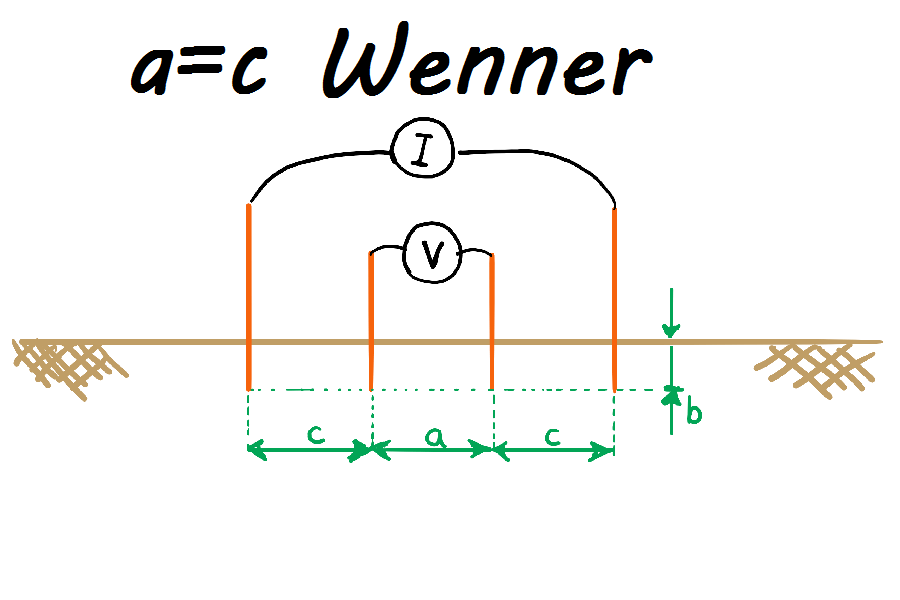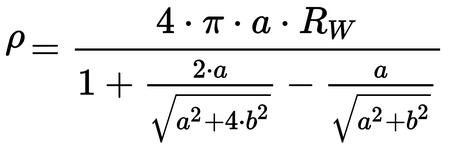
The four-electrode method, also known as the Wenner method, is the most famous soil resistivity measurement technique. This technique is also famous in the corrosion and cathodic protection industry. Learn the Wenner or four-electrode soil resistivity test method with the simplified description present here.
Test Procedure:
To begin the Wenner method, place four electrodes with the same distance in a line in the soil: in other words, c=a=c. Here, “b” is the penetration depth of the electrodes in the soil. By definition, when b<0.05a, the penetration depth of the electrodes is small. For example, in the case of a 1-meter electrode distance, the penetration of the electrodes should not be more than 5 cm. First, the current passes through two external electrodes. Second, measure the voltage between the two closest electrodes. The Wenner resistance, RW, is “V/I”. In this case, with small electrode penetration, the soil resistivity in Ω m is:

“a” is the electrode distance in m. When the penetration depth of the electrodes is higher than the mentioned threshold, the full equation used is (a and b in m):

The calculated soil resistivity from both equations is the mean soil resistivity value at a depth of “a”. This value is different from the soil resistivity at each layer. The field test is the same as the four-electrode test for calculating soil resistivity at different layers. In comparison, the latter case requires repeating the test with different electrode distances. Moreover, there is some elaboration on the soil resistivity test data for calculating soil resistivity at different layers. The related calculating procedure takes place during the soil layer analysis.
In all four-electrode tests, the electrodes should have a sufficient distance from any buried metallic parts in practice. Where there is insufficient space, the best option is to place electrodes perpendicular to the pipe. Any close metallic component could affect the current distribution and lead to an unknown error.
Instrumentation:
Available instruments for the four-electrode method usually use AC sources. The main reason is to avoid polarization on the electrode-soil interface. Some producers mention the frequency, while others do not. Moreover, many instruments in the market calculate the soil resistivity directly to negate concerns. Usually, there is a note in the instructions to avoid high penetrating electrodes in the soil (b>0.05a).
References:
You can download CCPTools to calculate soil resistivity with Wenner (four-electrode) method.
- ASTM G57, Standard Test Method for Measurement of Soil Resistivity Using the Wenner Four-Electrode Method, https://www.astm.org/g0057-20.html
- ASTM G187, Standard Test Method for Measurement of Soil Resistivity Using the Two-Electrode Soil Box Method, https://www.astm.org/g0187-18.html